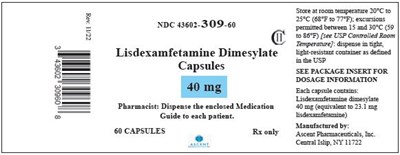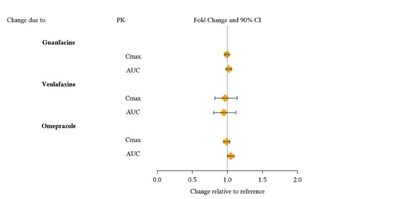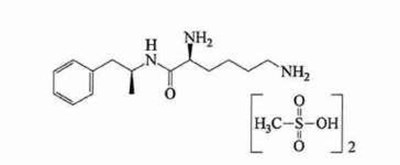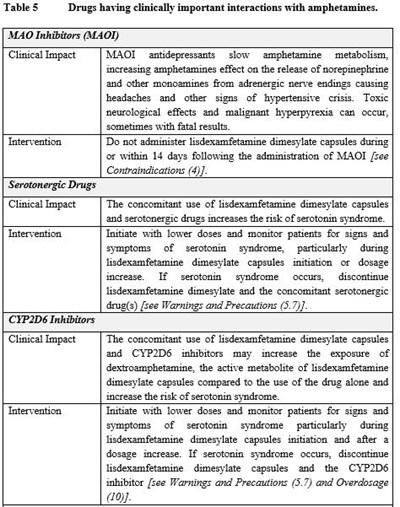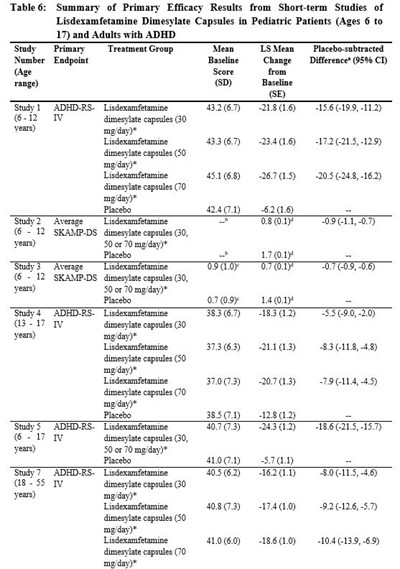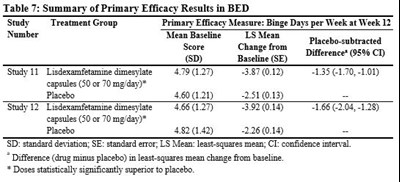Product Images Lisdexamfetamine Dimesylate
View Photos of Packaging, Labels & Appearance
Product Label Images
The following 31 images provide visual information about the product associated with Lisdexamfetamine Dimesylate NDC 43602-306 by Ascent Pharmaceuticals, Inc., such as packaging, labeling, and the appearance of the drug itself. This resource could be helpful for medical professionals, pharmacists, and patients seeking to verify medication information and ensure they have the correct product.
20 - 20 mg
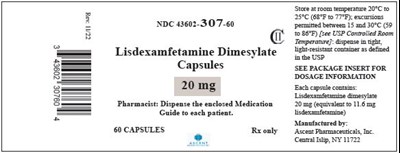
Store the Lisdexamfetamine Dimesylate capsules at room temperature between 20°C and 25°C (65°F to 77°F), with excursions permitted between 15°C and 30°C (59°F to 86°F). The medication is committed to maintain its efficacy at room temperature. It is advised to dispense the enclosed 20 mg capsules to the patient and provide them with the package insert for dosage information. The medication is manufactured by Ascend Pharmaceuticals, Inc. and the NDC number is 43602.*
Figure 3 - Figure 3
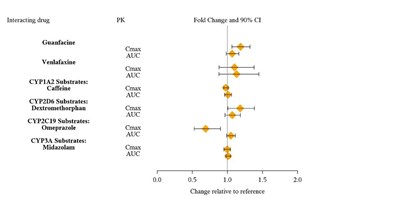
This text appears to be a list of drugs and their interactions with specific enzymes. It mentions the drugs Guanfacine and Venlafaxine as potential interacting drugs. It also provides information about the substrates of several enzymes, including CYP1A2, CYP2D6, CYP2C19, and CYP3A, with examples such as caffeine, dextromethorphan, omeprazole, and midazolam. It also references the terms "PK," "Fold Change," and "90% CI," which could possibly be related to pharmacokinetics. The context of the text suggests that it might be part of a scientific study or reference material.*
MG1 - MG1

Lisdexamfetamine dimesylate capsules, along with other amphetamine-containing medicines and methylphenidate, have a high potential for abuse and may lead to physical and psychological dependence. It is important for your healthcare provider to monitor for signs of abuse and dependence before and during treatment with these capsules. If you or your child have a history of alcohol, prescription medicine, or street drug abuse or dependence, inform your healthcare provider. They can provide more information on the differences between physical and psychological dependence and drug addiction. This medication may also pose heart-related risks such as sudden death, stroke, and heart attack in adults, and sudden death in children with heart problems or defects. It can also lead to increased blood pressure and heart rate.*
MG2 - MG2
This text discusses mental health issues, specifically focusing on potential problems related to psychiatric conditions. It mentions the possibility of experiencing new or worsening behavioral and cognitive problems. It also warns about the potential development or deterioration of bipolar illness, which is characterized by extreme mood swings. Additionally, the text mentions the emergence of new psychotic symptoms, such as auditory hallucinations or delusions, as well as new manic symptoms.*
MG3 - MG3

This text discusses the potential risks of lisdexamfetamine dimesylate during pregnancy. It mentions a pregnancy registry that collects information about the health of females exposed to the medication and their babies. If a woman or her child becomes pregnant while using lisdexamfetamine dimesylate, it is advised to speak to a healthcare provider about registering with the National Pregnancy Registry for Psychostimulants.*
MG4 - MG4
Selective serotonin reuptake inhibitors (SSRIs) and serotonin norepinephrine reuptake inhibitors (SNRIs) are types of medications used to treat various mental health conditions such as depression and anxiety. They work by increasing the levels of certain neurotransmitters in the brain. Triptans and tricyclic antidepressants are medications commonly used to treat migraine headaches. Lithium and fentanyl are other medications used in the treatment of certain mental health disorders and chronic pain respectively. Tramadol and tryptophan are also used for pain management and certain mental health conditions. Buspirone is a medication used to treat anxiety disorders. St. John's Wort is an herbal supplement that is sometimes used to alleviate symptoms of depression.*
MG5 - MG5
Circulation problems in fingers and toes, also known as peripheral vasculopathy or Raynaud's phenomenon, can cause various signs and symptoms. These may include numbness, a cool sensation, and pain in the fingers or toes. Additionally, the affected fingers or toes may change color, ranging from pale to blue and then red.*
MG6 - MG6

This text appears to be a list of potential symptoms or side effects associated with a medical condition or medication. It includes symptoms such as agitation, flushing, coma, loss of coordination, dizziness, hallucinations, high body temperature, fast heartbeat, seizures, sweating, confusion, tremors, stiff muscles, muscle twitching, changes in blood pressure, and gastrointestinal symptoms like nausea, vomiting, and diarrhea. These symptoms may suggest a serious medical issue or adverse reaction to a substance.*
MG7 - MG7

This text appears to be a list of possible side effects or symptoms related to a medical condition or medication. The text mentions various symptoms such as loss of appetite, decreased appetite, diarrhea, dry mouth, trouble sleeping, stomach pain, anxiety, weight loss, dizziness, irritability, nausea, and vomiting.*
MG8 - MG8
Dry mouth, trouble sleeping, decreased appetite, increased heart rate, constipation, feeling jittery, anxiety.*
MG9 - MG9
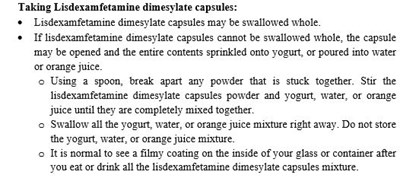
Taking Lisdexamfetamine dimesylate capsules: - The capsules can be swallowed whole. - If unable to swallow the capsules whole, they can be opened and the contents can be sprinkled onto yogurt or mixed into water or orange juice. - Use a spoon to break apart any clumped powder and stir until fully mixed. - Consume the mixture immediately and do not store it. - It is normal to see a filmy coating on the inside of your glass or container after consuming the mixture.*
table12 - table 1 2
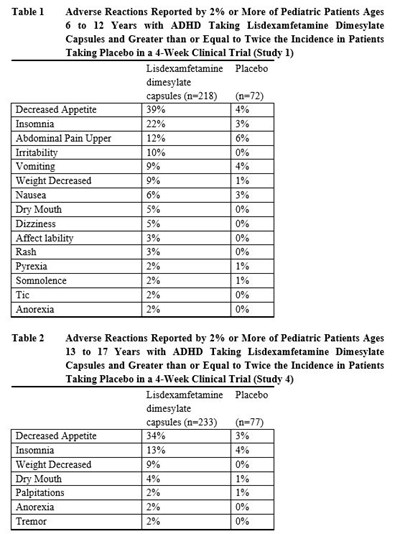
This text provides information on adverse reactions reported by pediatric patients with ADHD who were taking Lisdexamfetamine Dimesylate capsules. The text shows the percentage of patients experiencing specific adverse reactions compared to those taking a placebo in a 4-week clinical trial. The text includes data for two separate age groups: 6 to 12 years and 13 to 17 years. For the 6 to 12 years age group, the adverse reactions reported include decreased appetite, insomnia, upper abdominal pain, nausea, dry mouth, dizziness, pyrexia, somnolence, and tic. For the 13 to 17 years age group, the adverse reactions reported include decreased appetite, insomnia, dry mouth, palpitations, anorexia, and tremor.*
table3 - table 3.1
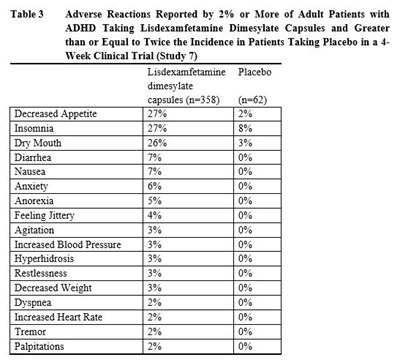
Adverse Reactions Reported by Adult Patients with ADHD Taking Lisdexamfetamine Dimesylate Capsules: This table shows the percentage of adult patients who experienced adverse reactions while taking Lisdexamfetamine Dimesylate Capsules for ADHD. The adverse reactions reported include decreased appetite, insomnia, dry mouth, diarrhea, nausea, anxiety, anorexia, feeling jittery, agitation, increased blood pressure, hyperhidrosis, restlessness, decreased weight, dyspnea, increased heart rate, tremor, and palpitations. The percentages indicate the incidence of each adverse reaction compared to the placebo group.*
table4 - table 4
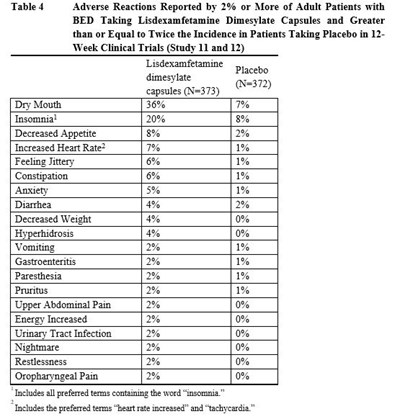
This is a table showing the adverse reactions reported by adult patients with BED (Binge Eating Disorder) taking Lisdexamfetamine Dimesylate Capsules compared to patients taking a placebo in 12-week clinical trials. The table lists the reactions that were reported by 2% or more of the patients taking Lisdexamfetamine Dimesylate Capsules and had a greater incidence compared to those taking placebo. Some of the reported adverse reactions include dry mouth, insomnia, decreased appetite, increased heart rate, feeling jittery, constipation, anxiety, diarrhea, decreased weight, vomiting, paresthesia, pruritus, upper abdominal pain, energy increased, urinary tract infection, nightmare, restlessness, and oropharyngeal pain.*
table 5.2 - table 5.2
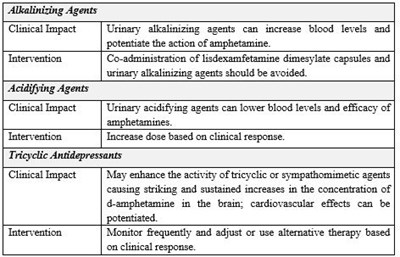
Urinary alkalinizing agents can increase blood levels and potentiate the action of amphetamines, thus co-administration of Hsdexamfetamine dimesylate capsules and urinary alkalinizing agents should be avoided. On the other hand, urinary acidifying agents can lower blood levels and efficacy of amphetamines, so increasing the dose based on clinical response may be necessary. Tricyclic antidepressants may enhance the activity of tricyclic or sympathomimetic agents, leading to increased concentration of d-amphetamine in the brain and potentiated cardiovascular effects. Monitoring frequently and adjusting or considering alternative therapy based on clinical response is recommended.*
* The product label images have been analyzed using a combination of traditional computing and machine learning techniques. It should be noted that the descriptions provided may not be entirely accurate as they are experimental in nature. Use the information in this page at your own discretion and risk.


